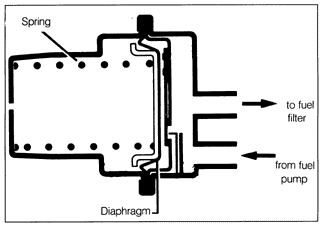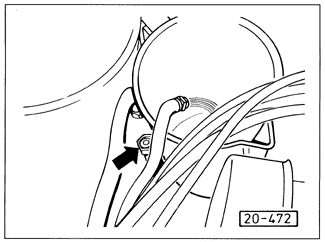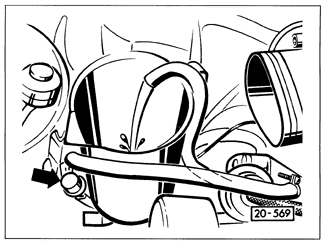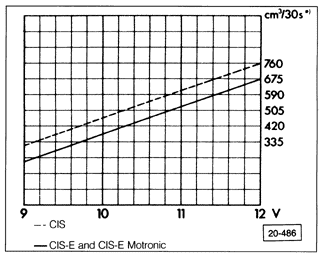4.3 Fuel pumpThe electric fuel pump is mounted in the fuel reservoir. The pump is cooled by fuel and therefore may be damaged if allowed to run dry. The pump runs whenever the ignition switch is in the start or run position and the engine is turning over or running. The important fuel pump performance measurements are fuel pressure and volume of fuel flow. Another important aspect of fuel system performance is residual pressure-the pressure which is maintained in the system after the engine is off to aid hot-starting. On cars with CIS, CIS-E, and CIS-E Motronic, residual fuel pressure is maintained by the fuel accumulator, located on the side of the fuel reservoir and shown in Fig. 4-6, and by a fuel pump check valve. On these cars, the fuel pump check valve is replaceable. See Replacing Fuel Pump Check Valve later in this section. To test fuel system pressure and residual pressure, see the headings covering pressure tests under 5. Continuous Injection System (CIS) and 6. CIS-Electronic (CIS-E) and CIS-E Motronic.

On cars with Digifant, residual pressure is maintained by a one-way check valve at the fuel pump outlet, and a one-way check valve in the fuel pressure regulator. The fuel pump check valve is not replaceable. To test fuel system pressure and residual pressure, see the headings covering pressure tests under 7. Digifant II Fuel Injection. To test fuel pump delivery rate:



If the fuel pump does not run, test as described below under Fuel Pump Electrical Tests. If fuel delivery is below specifications, check for leaks, blocked or kinked lines, a blocked filter, or a blocked transfer pump strainer/filter. If no such causes for low fuel delivery are found, the fuel pump is probably faulty and should be replaced. For more information on fuel filter service, see LUBRICATION AND MAINTENANCE. |